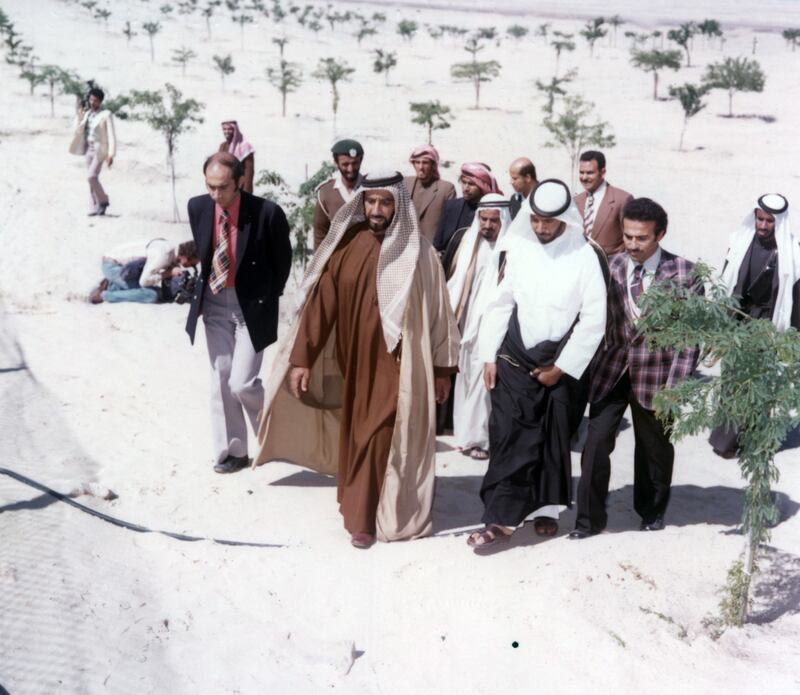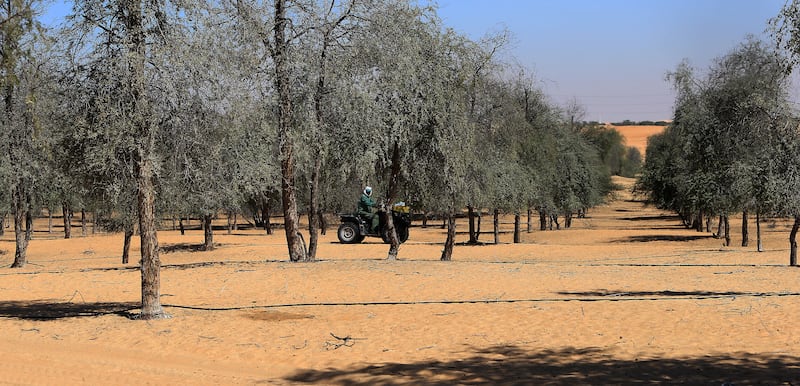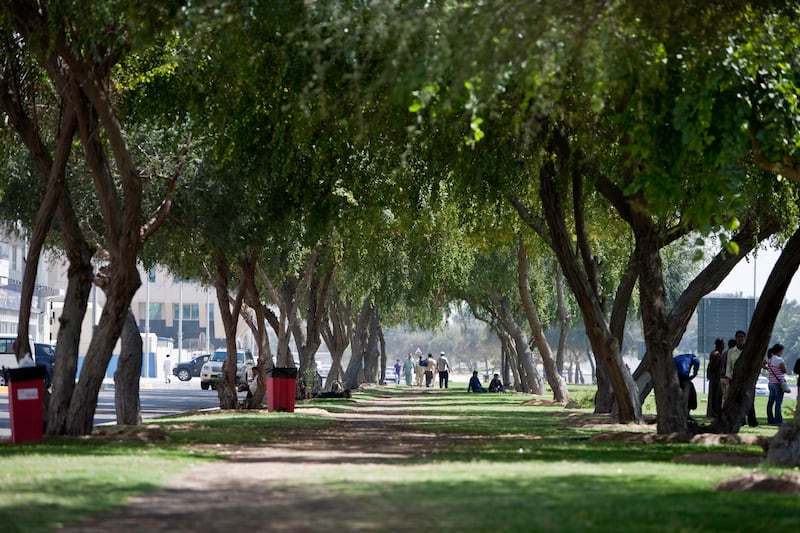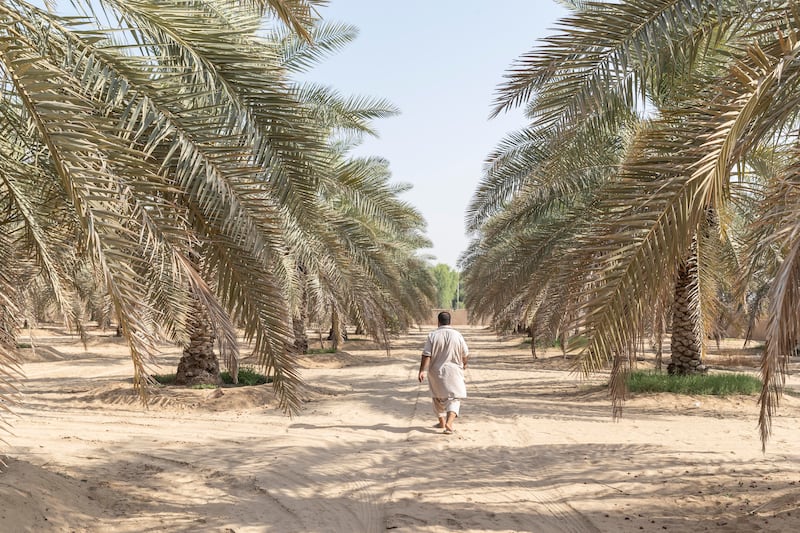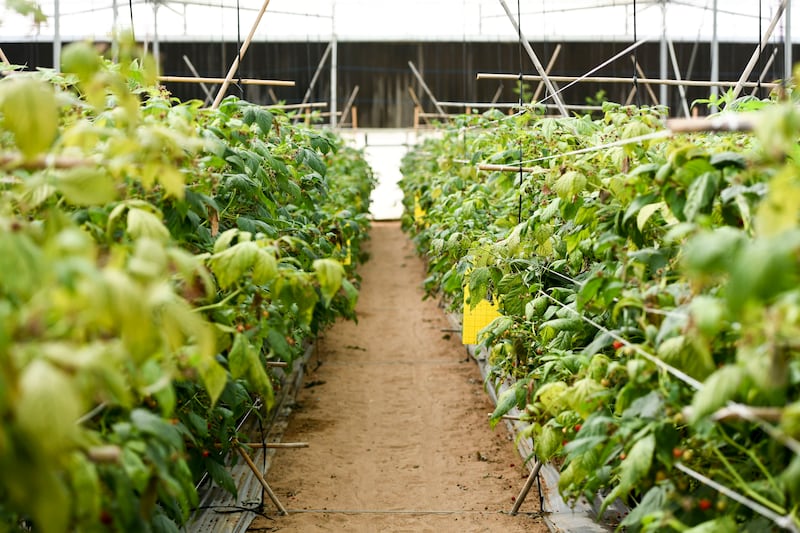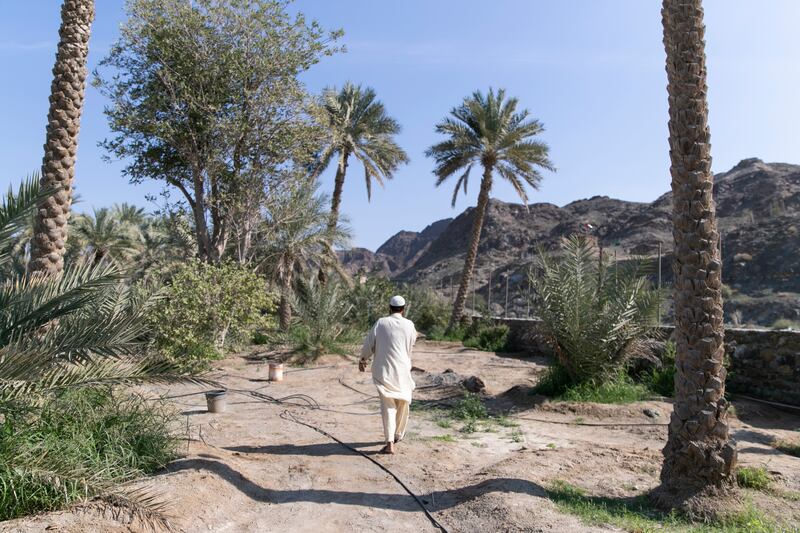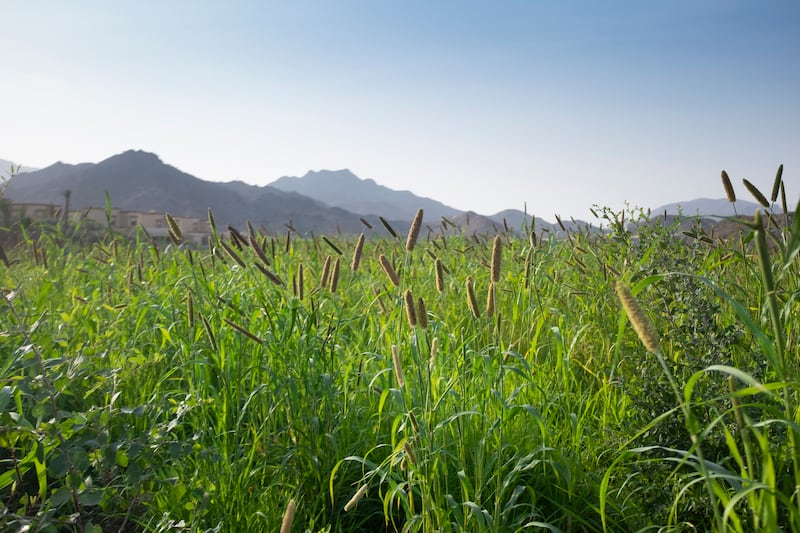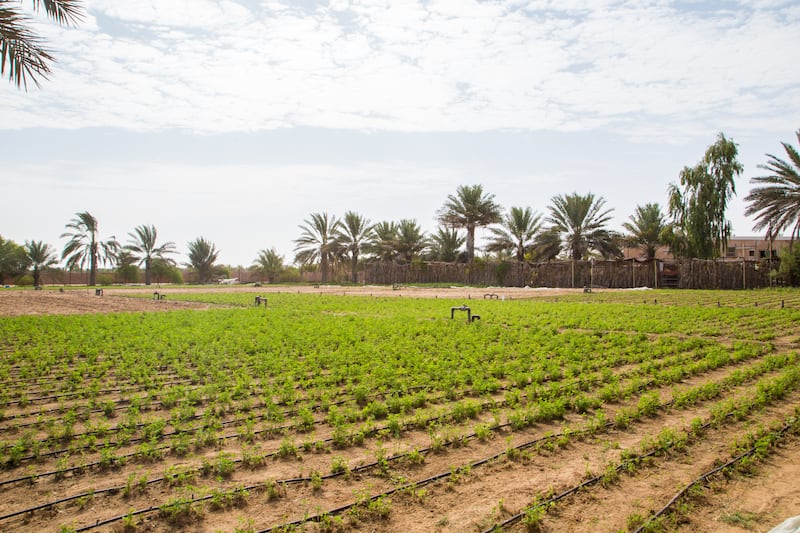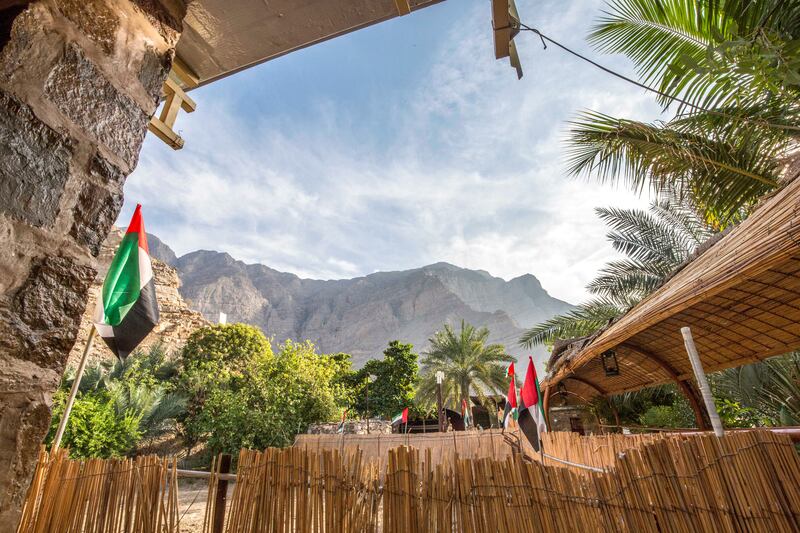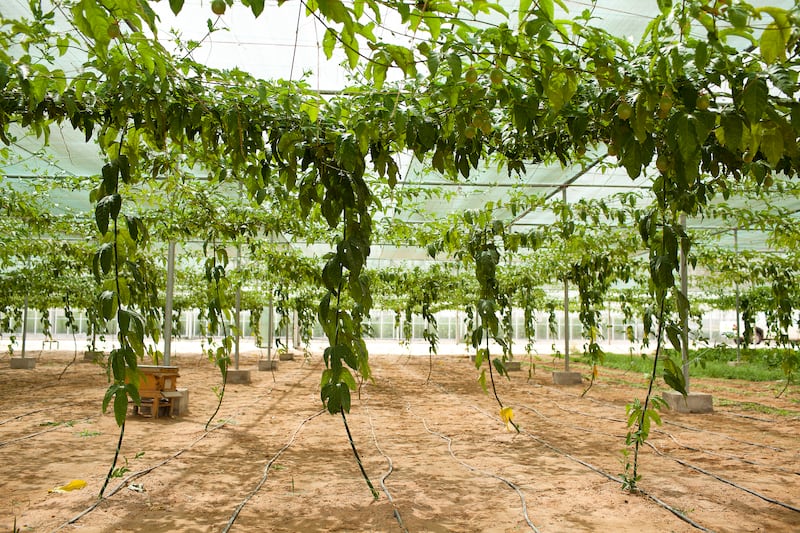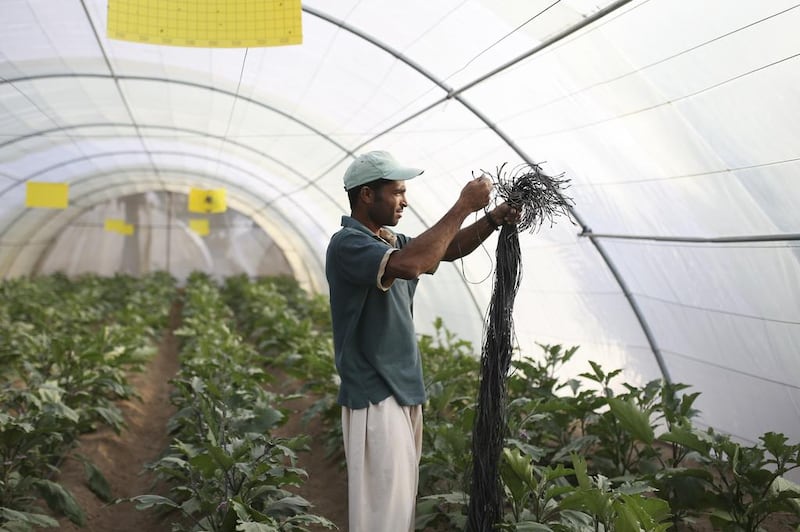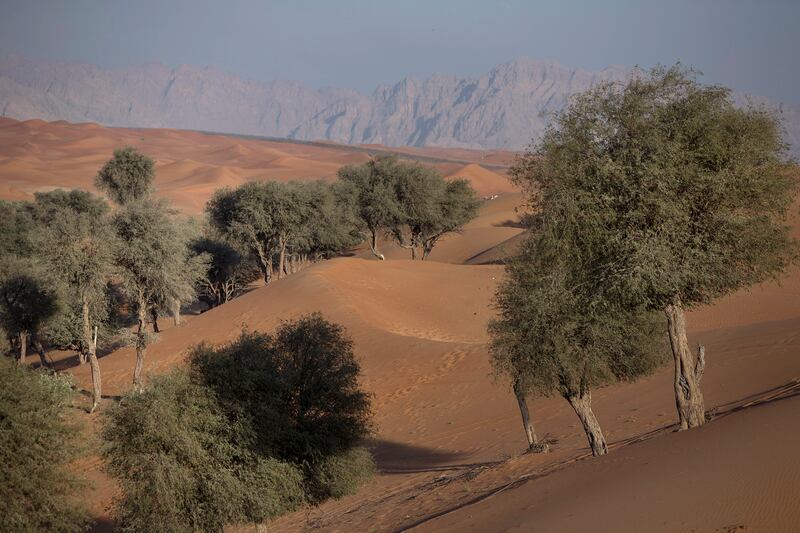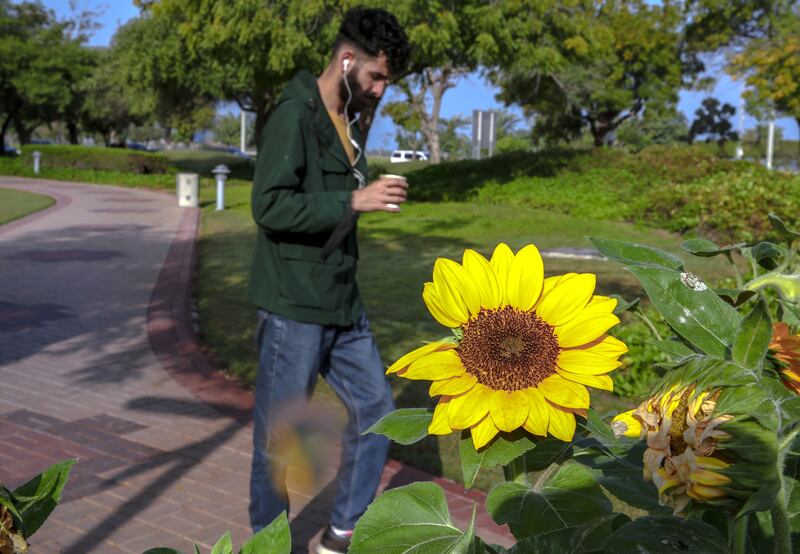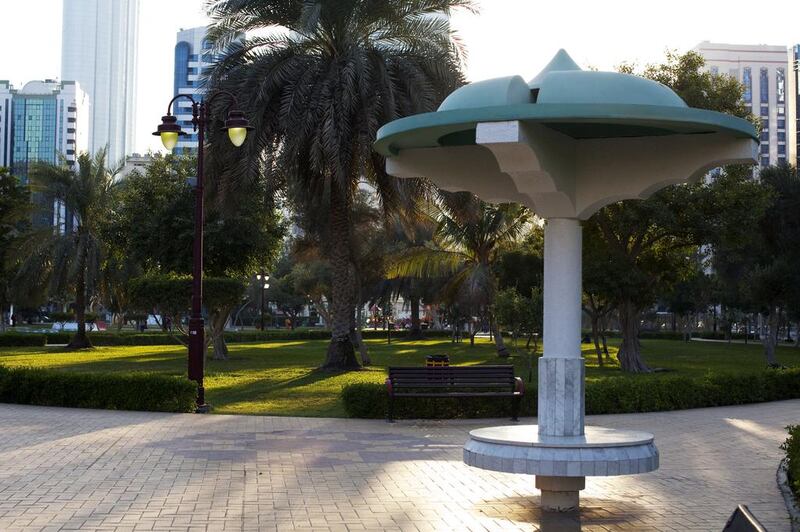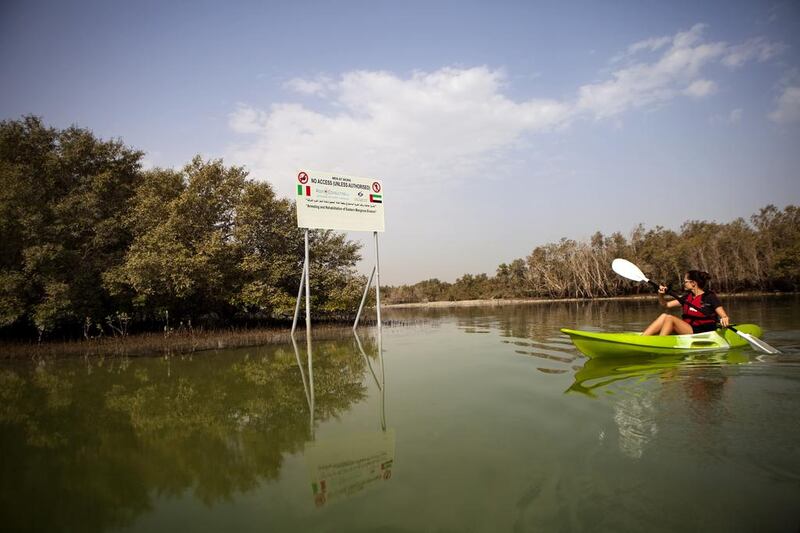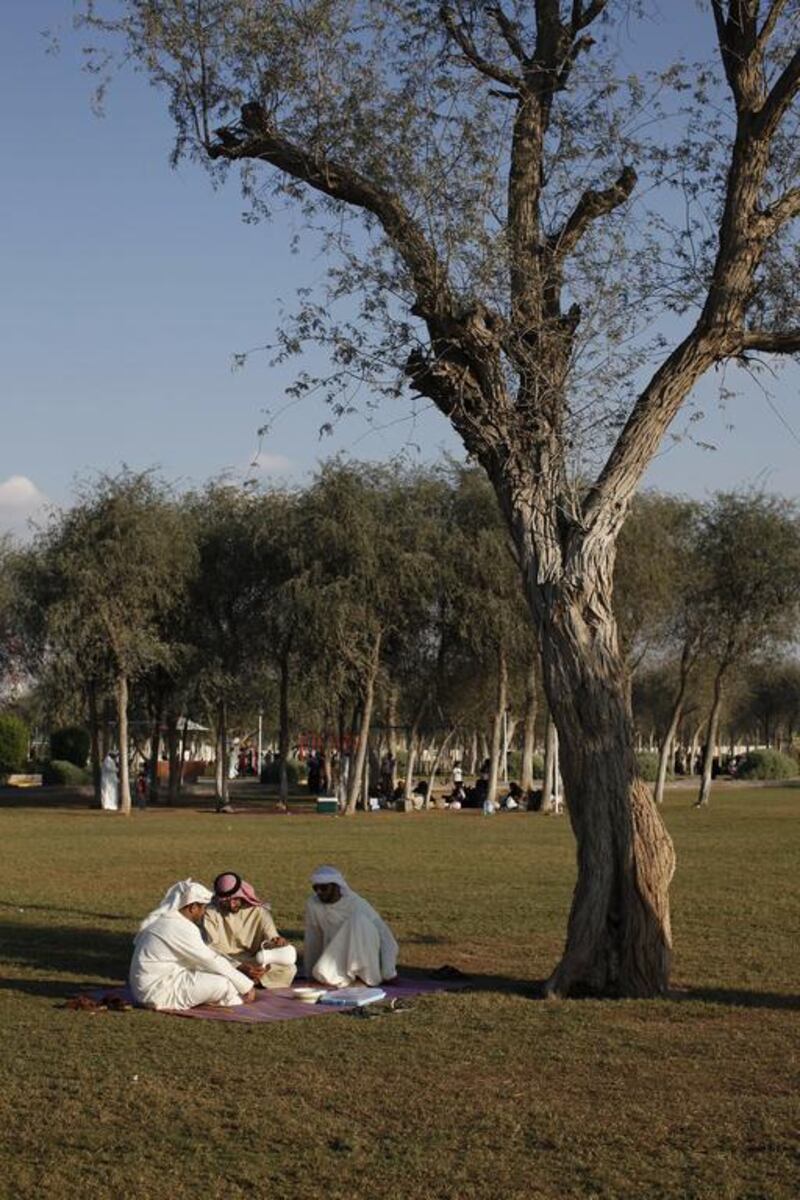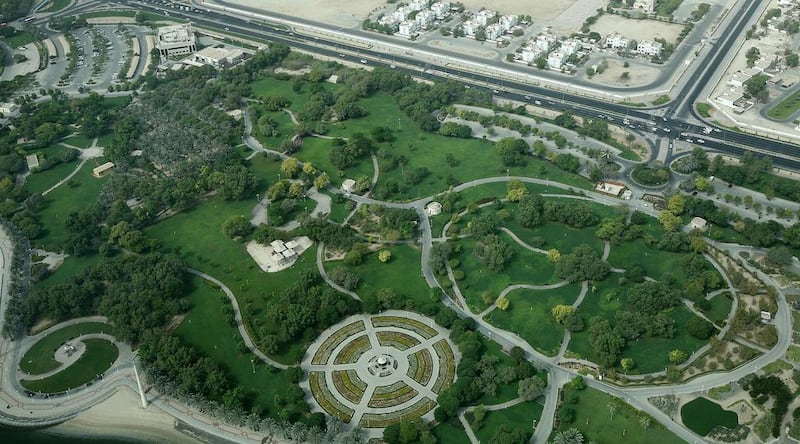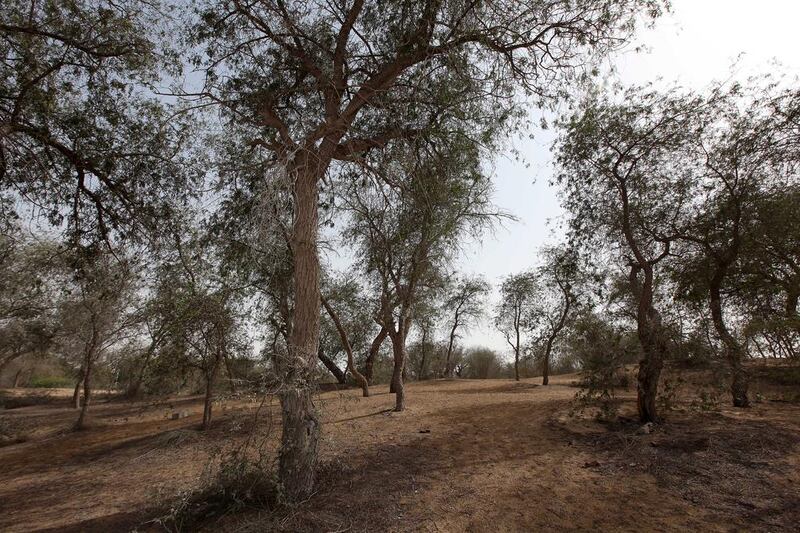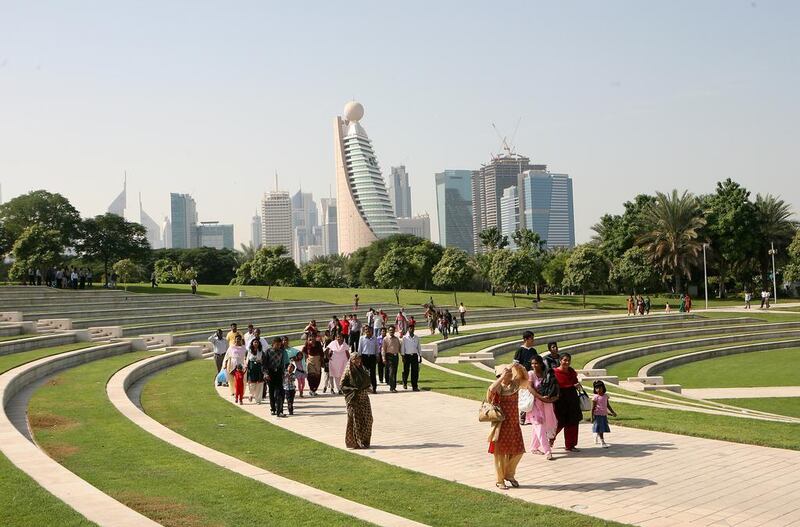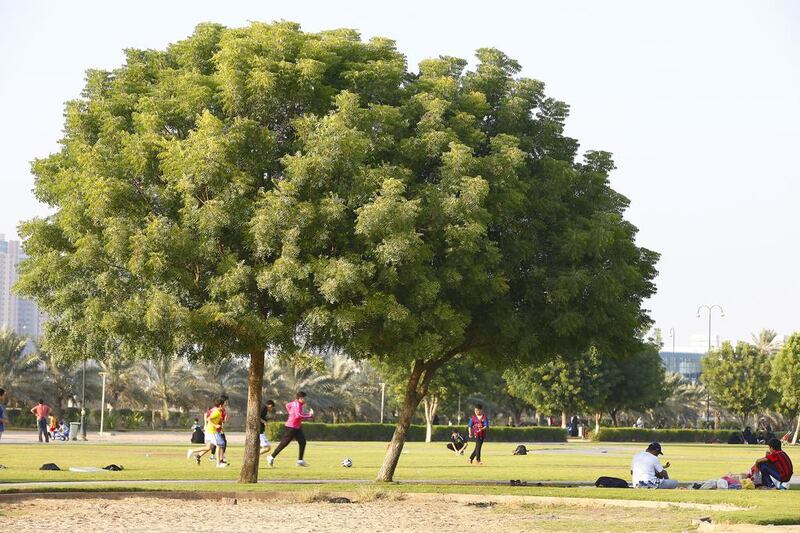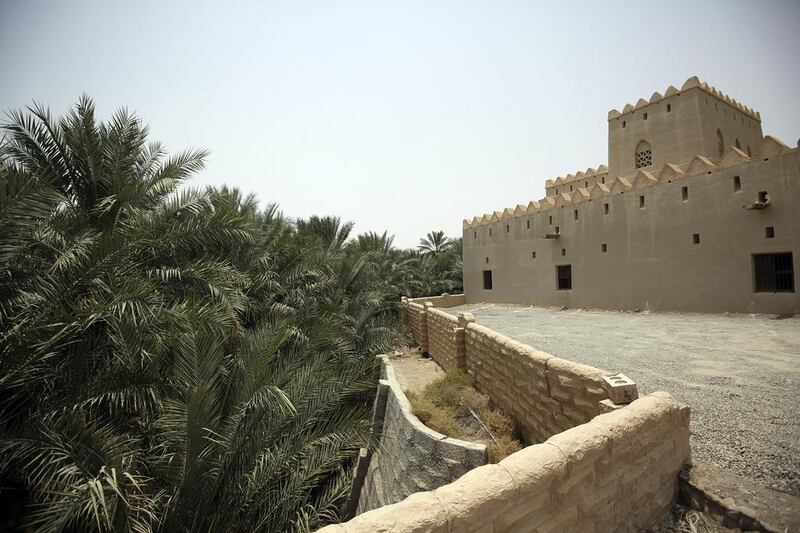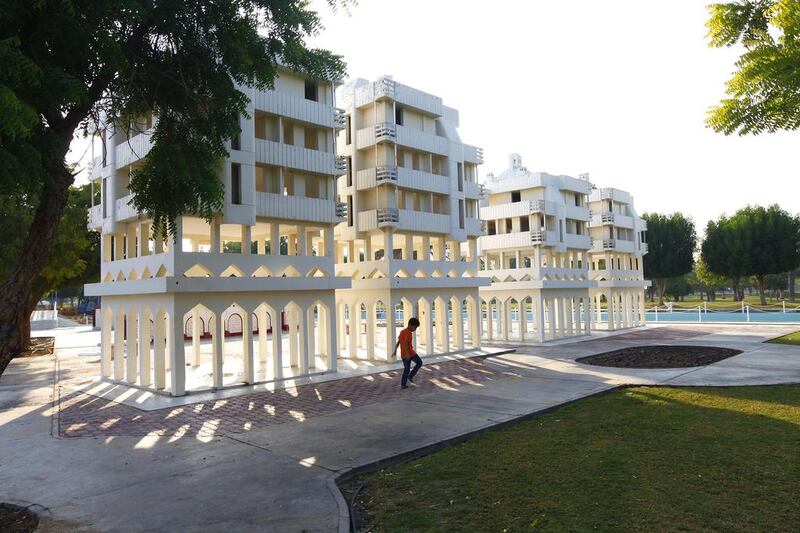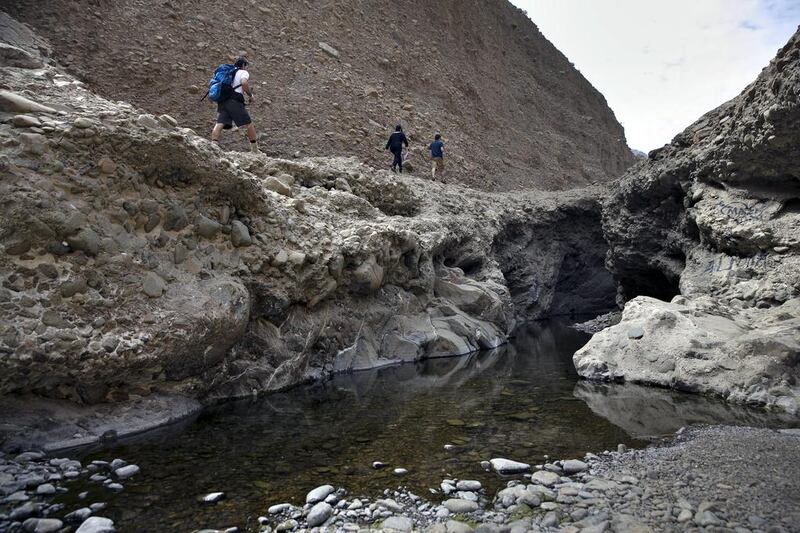It is easy to assume that more urban growth means less vegetation. But a study has found that, in the UAE at least, the opposite is true.
Research has found that over the past half a century, as the cities of Dubai, Abu Dhabi and Al Ain have grown, there has been an almost twentyfold increase in the amount of plant cover.
The growth is thought to be a particular feature of desert cities, where gardens, parks, landscaped roads with trees, and agriculture make the land greener.
The research was released earlier this month, by coincidence just before World Day to Combat Desertification and Drought, a UN event held on Friday.
Dr Basam Dahy, the first author of the paper, said it was a surprise when the analysis found that vegetation cover had increased so much.
“There is a common generalisation that urbanisation causes loss of vegetation cover,” said Dr Dahy, a postdoctoral fellow in the Department of Geosciences at UAE University in Al Ain.
“This is derived mainly from studies of the growth of the tropical and boreal [temperate] cities, where expansion is usually at the expense of forests (deforestation). But what we found in desert cities, namely Abu Dhabi, Dubai, and Al Ain, was completely different.”
Greening the desert
Al Ain
Based on analysis of satellite images taken between 1972 and 2021, Dr Dahy and his colleagues identified “constant growth” in the vegetation cover.
The total increase over the five decades was 1,883 per cent — meaning that vegetation cover had grown almost twentyfold.
The drive to green the desert in the country's formative years was led by the UAE's Founding Father, the late Sheikh Zayed bin Sultan Al Nahyan.
The wide-ranging strategy included a huge project of tree planting initiated by Sheikh Zayed, who was building permanent homes for the nomadic Bedouin in the parched desert.
Dubai
Sheikh Zayed hoped the trees would provide shade, improve the appearance of the villages and make them more liveable.
“Research shows that the three desert cities tend to increase vegetation area by expanding urban vegetation while continuing their steady urban growth. The urban vegetation includes parks, gardens, street trees, and other green spaces,” Dr Dahy said.
Aside from the growth in this urban vegetation, other factors have helped to increase plant cover during the past half a century. Dr Dahy said there was more agriculture than before, for example.
“Another driver of vegetation cover change is the environmental protection laws that were introduced during the 80s and 90s to protect and conserve the environment especially the coastal vegetation of the marine environment,” he added.
Some factors that caused vegetation cover in the UAE’s urban areas to increase will not apply to the countryside, but greening has happened there.
Abu Dhabi
“We can still see an increase in vegetation cover in the countryside, which is driven by other factors, like the extensive granting of agricultural farms to civilians as part of the Bedouin settlement governmental policy during the first two decades after independence,” Dr Dahy said.
“The other factor is the building of the artificial forests, which spread throughout the whole emirate of Abu Dhabi and which are seen at the eastern part along the road heading to Abu Dhabi city.”
Titled, “Random forest for classifying and monitoring 50 years of vegetation dynamics in three desert cities of the UAE,” the study has been published in The International Archives of the Photogrammetry, Remote Sensing and Spatial Information Sciences and was presented at a congress in Nice, France, earlier this month.
The other authors are Prof Salem Issa, a professor of remote sensing in the Department of Geosciences, and Dr Nazmi Saleous, an associate professor in the Department of Geography and Urban Planning, both at UAE University.
AI charts change in country
The researchers used artificial intelligence with a specialised algorithm to analyse satellite images of the three city areas from 1972 to 2021 to classify what the land was being used for and to detect changes.
It accurately identified different vegetation cover, including coastal/wetland vegetation, urban vegetation, farms/crops and natural/artificial vegetation.
The research is part of an continuing project funded by UAE University to understand how land use in the UAE is changing. One reason why this is important is to better understand the country’s carbon footprint.
“The study will cover the whole of the UAE to understand the nature of the vegetation expansion trends and other land cover types throughout the five decades since the independence of the country in 1971,” Dr Dahy said.
While the latest study indicates that the growth of the UAE’s urban areas has increased greenery levels, previous studies by other researchers have suggested that development also has potential environmental downsides.
It is thought, for example, that habitat loss from development poses a threat to native reptile species in the Emirates and in neighbouring countries, such as Oman.
